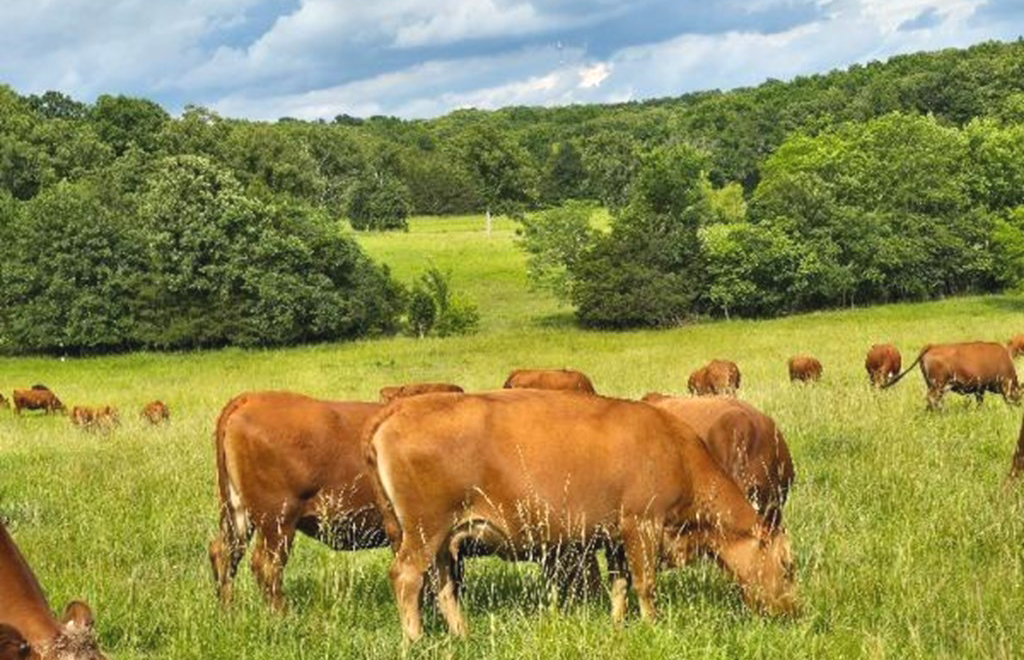Based on available data, the July 2024 beef cow inventory is projected to be 1.8% below the July 2023 level, consistent with the reported 2.5% decline in January.
Scott Brown -- Economist with the University of Missouri
Without the USDA July Cattle Report, analysts rely on other data that show beef cattle producers are retaining cows and rebuilding the herd. However, weather and markets may create a shift in mentality.
Under more normal times, the cattle industry would be strongly debating what the USDA's July Cattle Report would say about the inventory of beef cows and cattle, but not this year.
Because of budgetary issues at USDA, there is no report this year. Still, it is critical for the industry to have as much information as possible to detect any signs of early herd rebuilding after the declines experienced in the past five years because of drought and high input costs.
For now, the best strategy is to look to other sources of data to get an estimate of the possible size of the July beef cow inventory.
Based on available data, the July 2024 beef cow inventory is projected to be 1.8% below the July 2023 level, consistent with the reported 2.5% decline in January.
Estimating tools
Without the July Cattle Report, the industry must rely on these alternative data sources:
Beef cow slaughter: This can offer insights into inventory trends. From January through May, beef cow slaughter is 13.1% lower than the same period in 2023, suggesting that cow-calf producers may be retaining cows longer.
Heifers on feed: Another useful metric is the percentage of heifers in the total cattle inventory on feed in 1,000-plus-capacity feedyards. On April 1, 38.5% of the cattle on feed were heifers.
Historical analysis: This shows that the percentage of January through June beef cow slaughter relative to January beef cow inventory correlates with changes in July beef cow inventory.

A line graph indicating July 1 beef cow inventory drivers
The graph highlights two significant growth periods in July’s beef cow inventory: 1991-95 and 2015-18. During these periods, the blue line represents the percentage of January through June beef cow slaughter relative to January beef cow inventory. It consistently stayed at 4.5% or lower.
Unfortunately, data on the percentage of heifers on feed was unavailable from 1991 to 1994. However, during those years, the July 1 beef cow inventory tended to increase when the heifer percentage fell below 35%. The graph’s gold line emphasizes the low heifer levels during the 2015-18 period, which contributed to rapid herd building.
Computing the cow herd
A simple regression equation where beef cow slaughter and percentage of heifers on feed data estimate the annual percentage change in July beef cow inventory shows that these variables alone can explain 76% of the historical variation in July beef cow inventory.
Other factors not included in the regression — such as weather, feed costs and cattle prices — could be important in explaining the remaining variability in July beef cow inventory.
This equation can estimate the July beef cow inventory. The percentage of heifers on feed stood at 38.5% on April 1, and the January through June beef cow slaughter relative to the January beef cow inventory is estimated at 5.1%.
These observations project that the July beef cow inventory will be 1.8% below July 2023.
The most important conclusions from this approach to estimate the July beef cow inventory annual change are:
- Although beef cow inventory continues to decline, the rate of decline could be slowing.
- Continued better weather and profitability could lead to increases in beef cow inventory in the next year.
Beef cow slaughter and the level of heifers on feed will continue to provide additional information for the remainder of this year about the future beef cow inventory, which can help producers make better decisions on their operations.











